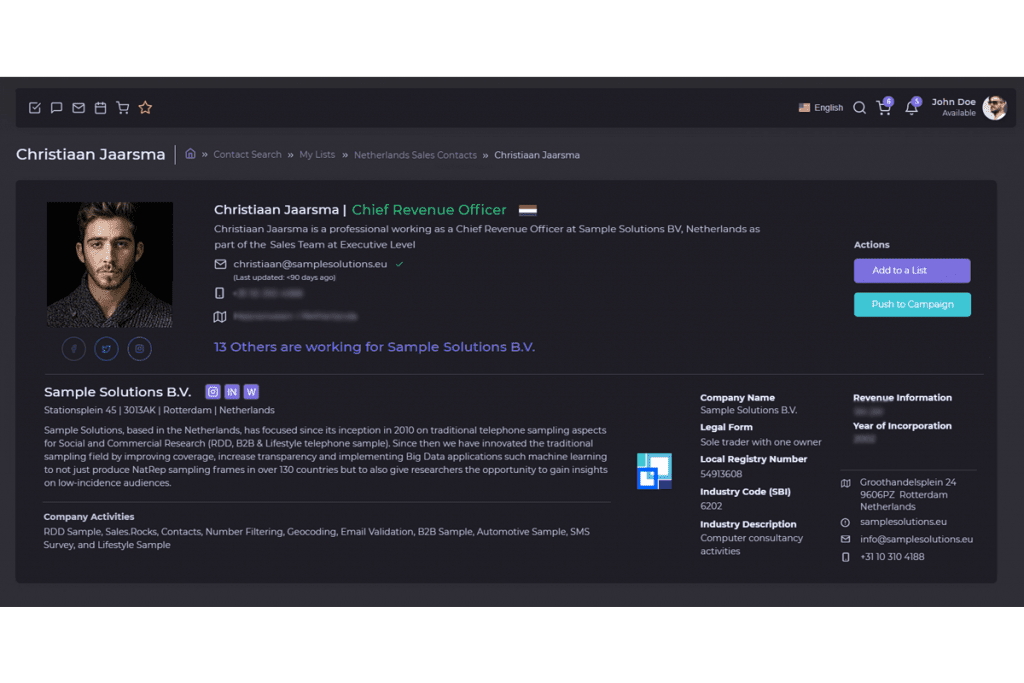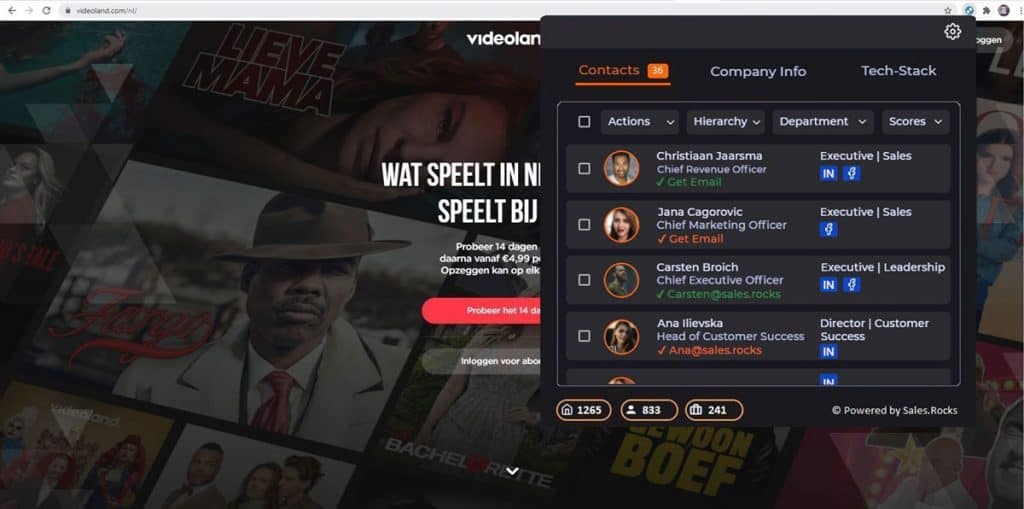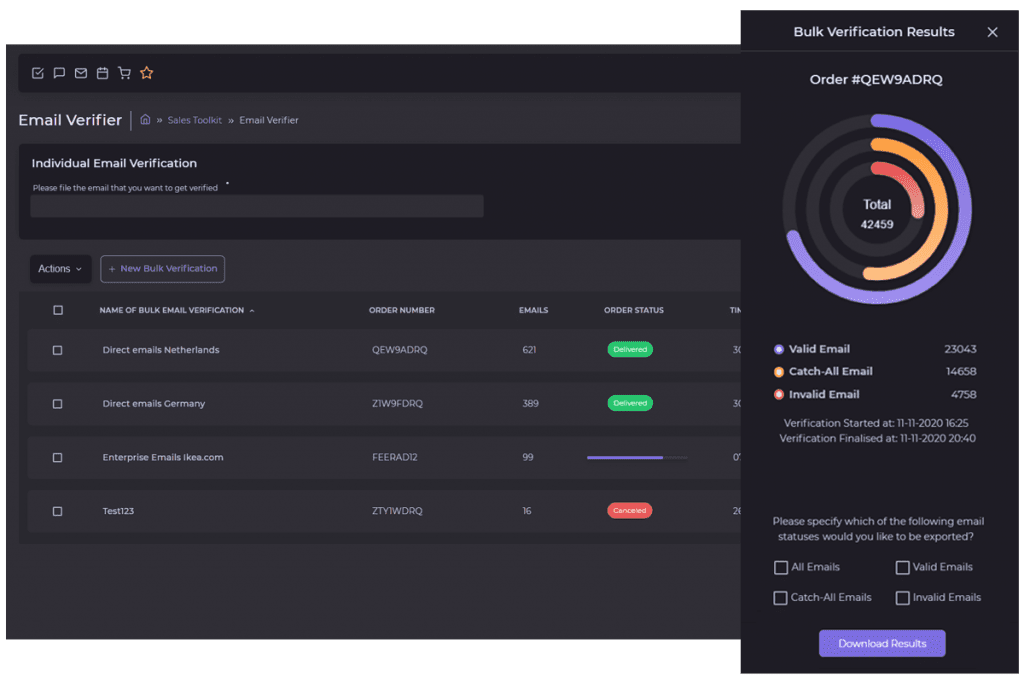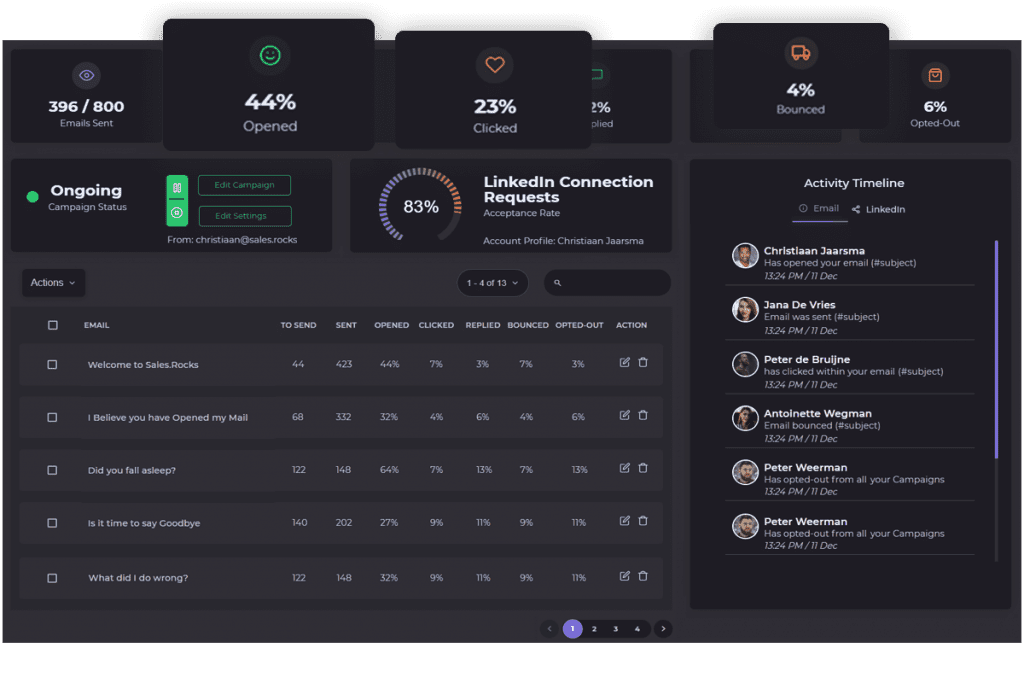Updated on July 12, 2022
When it comes to sales tools, you need to use the right tools for the right situation.
By now you know the why, what and how automating parts of your sales process affect the whole picture if you went through the previous posts as part of the complete guide.
Sales tools help you better use the most valuable resources at your disposal, the time and experience of your sales team, allowing them to leverage their skills in other parts of the sales journey. In LinkedIn’s State of Sales 2020 report, 43% of salespeople actively use sales intelligence tools, an increase of 54% compared to 2018. This number will only grow as more and more companies see the value they can get from automating part of the sales process.
What parts of their day-to-day can salespeople improve with automation?
Salespeople, depending on the requirements of their position, use several tools for sales automation in three categories for day-to-day sales.
-
- Customer relationship management software
- Research and prospect data generation
- Creating engaging outreach campaigns
1. Customer relationship management software
The CRM is at the heart of your sales process. It contains all prospect data including company and contact information that you have gathered, in addition to keeping track of all your current clients and any change in their client profile. CRMs have evolved to complete sales ecosystems offering a complete toolset for sales and marketing in addition to their data entry and client interaction functionality.
Modern CRMs such as Zoho, for which we offer direct integration for data export, Hubspot, Pipedrive and Salesforce which we integrate with via Zapier, have become market leaders for SMBs and enterprises as the need for data management has grown exponentially.
The best thing about using CRMs is that you can automate the journey of your leads to potentials and convert them into clients. This can be automatically done by task implementation for each individual lead. A task can be to send an email’, or ‘make a call, or it can be a ‘reminder’ to send some extra info or ask for feedback or schedule a demo. Advanced CRM integrations allow you to combine your other sales tools with task creation and automation which will help you further in the sales.
2. Research and prospect data generation
The prospect generation phase consists of a very important but tedious part of the process, finding potential prospects and relevant data that can be used to see if they fit your optimal ideal customer profile. Although this is an integral part of the sales process, finding prospects and gathering data about them manually is detrimental to your revenue and projected growth.
Tools that are connected to a business database are the tools you need for this.
The Company and Contact Search on Sales.Rocks for example are the perfect solution to find leads outside of the usual business platforms like LinkedIn. Through a filtering system based on over 50 unique data points, you can search for 3 types of information: firmographic, demographic and technographic data. Finding companies and contact based on the specifics of your ICP and buyer persona respectively is easy. Afterward, save your company and contact lists for quick export to your CRM.

Tools that use Sales Triggers help you keep track of new developments in your target companies. Watch out for new job openings or investments signaling business growth or changes in the tech stack for the opportune time to present your service.
The right sales tool for your sales
Sell more with Sales.Rocks
Data extraction tools come in handy for a quick check-up on a company and the employees working there.
The Sales.Rocks Chrome extension is for sales teams that need a vital piece of data during the final stage of the sales process. Detailed company information and direct contact options for prospects as well as technographic data leveraging the full power of our platform in your Chrome browser.

What about the data you already have?
Use verification tools that will clean your data and update it in real-time.
The Email and Phone Number Verifier is the perfect tool that automates the data cleaning process such as in bulk number and email verification which are necessary for quick data validation. Every piece of information needs to be verified before being used and the data needs to be cleaned regularly, as the decay rate increases exponentially over a period of one year.

3. Creating engaging outreach campaigns
The other key phase of the sales cycle involves reaching out to new prospects and utilizing your data to achieve the final goal of every sales process, which is closing the deal and making a sale. There are different tools that can help you during this part of the sales process through basic automation of routine tasks where you can create engaging campaigns in just 15 min, and still have killer open and response rates.
The Drip Campaigns offer hyper-personalization and easy automation, designed to keep the interaction going based on prospect input. Set triggers according to their actions and you can map their journey at every stage through the sales funnel, with custom conditions, delays and messages.

You can automate LinkedIn actions as well such as a connection request, sending a direct message, like a recent post, or endorsing a skillset.
Domain Warming tools – In order to avoid your domain being marked as a spammer for your recipients it’s a smart thing to warm it up before sending your emails. The Email Warmer is a great tool for “warming up” your email to appear as an older and more reputable account so it can send more emails in a shorter time span with a higher limit.
Tools that allow human-like touch – When sending content to potentials you should hold on to the personal approach. Tools with advanced features that can customize your entire content are a step ahead of the old-fashioned and simple template builder tools. Hyper-personalize your email content with dynamic text for key data points and custom branded design and images for a better visual presentation and create custom email templates for different campaigns and with a different goal in mind that benefit the prospect’s sales experience.
Track your email metrics to measure the success of your sales outreach. High open and click-through rates signify the peaked interest of the prospect while high reply rates are a sure signal for scheduling a demo. Tools that have good APIs and can also track your custom links will give you a much better insight into each email you create.
Unify Hardware and Software Inventory Data to track and manage all IT hardware and software assets in a centralized and automated way. This is done through Asset Discovery Tools. It allows you to take asset information from third-party sources and network discovery data and finally provide your IT team with a single version of truth for your company’s IT asset estate.
To do a recap
As you can see, a large part of the process can benefit from the automation of manual tasks that only require minimal input. Whether it is data generation, extraction, verification and export as well as task involving email outreach, automation tools play a vital part in the sales process.
Improve your selling skills


